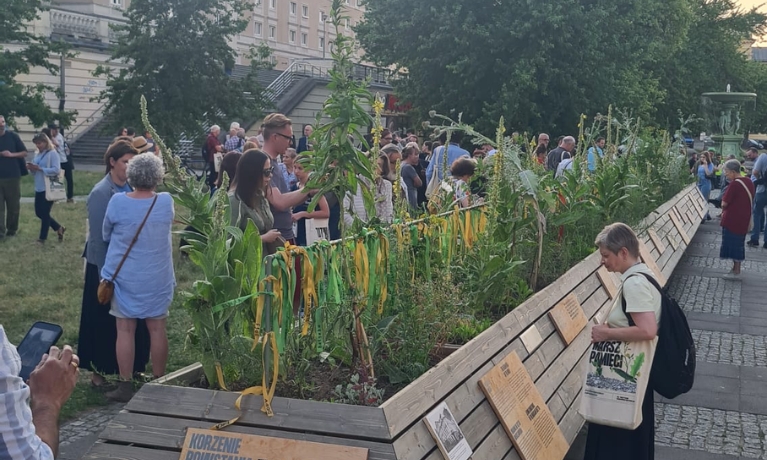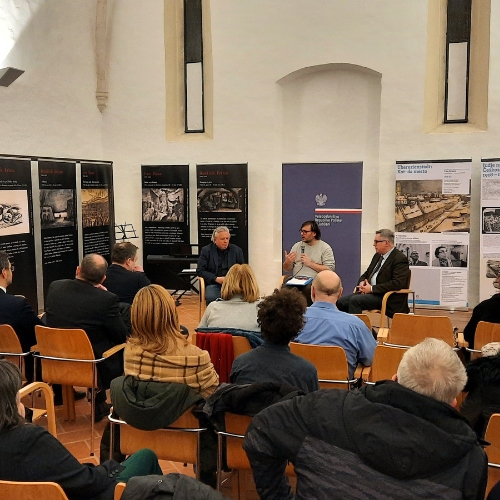81 years since the great action of the Warsaw Ghetto

On July 22nd, 1942, the great Warsaw Ghetto transfer took place, the great transportation of what the Nazis tried to portray as transfer east for resettlement, but was actually transfer to Treblinka and the extermination of about 260 thousands Jews of all ages.
The Nazis informed Adam Czerniaków – head of Warsaw Ghetto Judenrat – at the beginning of the transfer and demanded that the Jewish police provide a daily quota of thousands of Jews. He understood the meaning of this and his conscience would not allow him to be part of it. He, therefor, chose to commit suicide.
The great transfer was traumatic for all Ghetto inhabitants. Both for the hunted (Jews who had no way of bribing anyone, or had no connections or vital working places) and the hunters (the Jewish police who found themselves hostages, responsible for their families fate, if they did not fill in the quotas set by the Nazis.
The Emanuel Ringelblum Jewish Historical Institute, JHI, reminds us every year of the great Warsaw Ghetto transportation by marking July 22nd with a march joined by thousands of Polish people of all ages. The march starts at Umschlagplatz (the train transfer square) and ends around the Ghetto area.
This year the march took place on Friday July 21st (because of the Sabbath) in which 23000 people took place, mostly Polish. The Israeli and German embassies sponsor the event and, the Israeli ambassador, Mr. Yaakov Livne, took part in the march. The Polish government was represented by the Polish President personal adviser and members of the Polish parliament.
The History Division General Director, Yaakov Asher, represented Moreshet and Havatzelet and, at that very same morning, signed a memorandum for four projects in conjunction with the JHI: The rights for the book ‘Flames in the Ashes’ by Rozka Korczak (a partisan and one of Moreshet founders) would be given so it could be published in Polish; JHI will give Moreshet the rights to publish their book on the trials conducted by the Jewish community in Poland, in 1946, for the Jews who cooperated with the Nazis; and the translation into Hebrew of one of Hashomer Hatzair volumes in the Ringelblum archive. JHI would receive from Yad Yaari and Moreshet items from Nathan Rapoport personal archive and documents relating to the role played by Hashomer Hatzair in the Ghetto and the uprising, for an exhibition, in 2024, dealing with the way the Uprising is represented by Rapoport and Hashomer Hatzair monuments.
In the ceremony, which took place in Umschlagplatz, before the march, Monika Krawczyk, JHI Director, talked about the meaning of the place from which transfers to Treblinka were taken and mentioned that this year marks 80 years to the Warsaw Ghetto Uprising and the important role Hashomer Hatzair movement played in the Warsaw Uprising and other uprisings in occupied Europe. She told the crowd about Moreshet and the rich and fruitful cooperation between the two institutes and expressed her thanks to Moreshet and Yaakov Asher for joining the event.
The marchers received bands on which the names of the Ghetto families have been written and, at the end of the march, the bands were hang up on an enormous planter on which sides were written the Ghetto and the Uprising stories. Hashomer Hatzair was largely represented. Out of five personalities displayed, three were Hashomer Hatzair members – Mordechai Anilevich Tosia Altman and Shmuel Breslev. Tosia’s photo came from the Moreshet archive which received the due credit.


